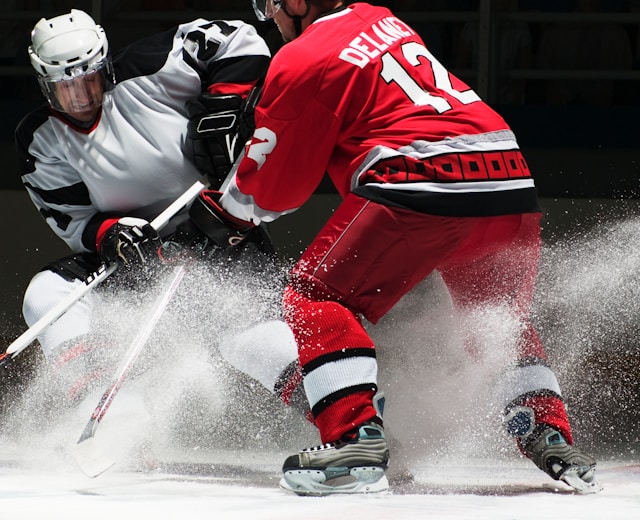Empty-Net Goals Make NHL Tough To Bet
The NHL has always ranked behind the NFL, NBA and MLB in terms of popularity among the major North American sports. The same holds true when it comes to betting on the major North American team sports.
Hockey lags well behind football, basketball and baseball when it comes to wagering on the big sports in the USA. Even in Canada, where hockey rules as the king of sports, betting on the NHL isn’t the bonanza people expected it would be once Canada moved to legal and regulated sports betting in 2022.
There’s a reason for this and it’s got nothing to do with the respective popularity of each sport. In hockey, there exists an element that isn’t present in any other sport. And that’s the empty-net goal.
If a team is trailing by a close margin late in an NHL game, they are going to pull their goaltender in favor of an extra attacker. It’s a risky strategy, of course, to leave the goal unattended and that’s why more often than not, it fails to succeed.
Empty-Net Goals Often Punish Puck Line Bettors
Betting on the NHL doesn’t offer a point spread similar to wagering on the NFL or NBA. Instead, you can bet on the puck line. Each team in a game is assigned a puck line. The favorite generally is given a puck line of -1.5, while the underdog is set with a puck line of +1.5.
In essence, it’s the same as giving one team a 1.5-0 lead, while leaving the other club to begin the game as if they were trailing 1.5-0.
Let’s say you are going to bet on a game between the New York Rangers and Carolina Hurricanes. The Rangers are at home and favored, so they are given a puck line of -1.5 at odds of +105 at betMGM NJ or other legal NJ sportsbooks listed. The underdog Hurricanes are assigned the +1.5 puck line at a betting line of -125.
You like the Hurricanes as a solid underdog play and take Carolina at +1.5 in the puck line. With two minutes to play, it’s looking good for you and your bet. The Hurricanes are trailing 2-1, meaning with a +1.5 puck line, they’re going to cover.
But wait, Hurricanes coach Rod Brind’Amour is pulling goaltender Fredrik Andersen for an extra attacker. Rangers forward Artemi Panarin gets behind the Carolina defense for an easy tap-in empty-net goal. The game finishes 3-1 Rangers and you lose your puckline wager.
Making matters worse for puck line bettors, NHL coaches are now pulling their goalies with almost reckless abandon. The standard time to pull a goalie used to be with one minute to play in regulation time. Today, most coaches will hook their goalie with at least two minutes to go. It’s only serving to increase the opportunity for the other team to slide an empty-netter home.
So does that mean you shouldn’t ever bet the puckline?
No, not at all. But like any other wager, do your homework before placing the bet. You can research how often a team gives up an empty-net goal, as well as how frequently they score with their goalie pulled. Seek out matchups in which the team you are going to bet fits into one of these two categories.
Totals Also Hurt by Empty-Net Tallies
Another aspect of pulling the goaltender that’s changed in recent years is that coaches will leave the goalie on the bench even after surrendering an empty-net goal. It used to be that once the empty-net goal was scored, the team that was scored on, now significantly unlikely to win, would return their goalie to the net.
While the number of empty-net goals that go in is immaterial to destroying a puck line wager – one is generally enough to blow up your bet – two or three empty-netters can turn an under win to an over win on the total.
Suppose the total on that Rangers-Hurricanes game was 5.5 goals. The Rangers get the first empty-net goal to make it 3-1. If you bet the under on the total, you’re still okay. However, Brind’Amour decides to leave Andersen on the bench and the Rangers score two more empty-netters, making it a 5-1 final. There goes your under play up in smoke.



